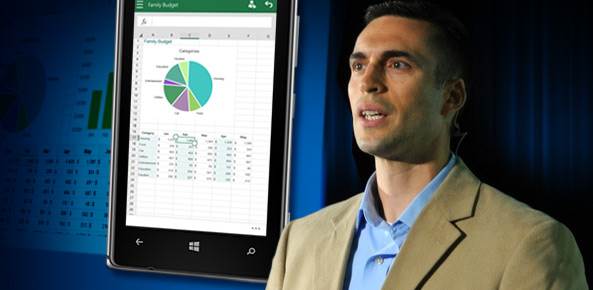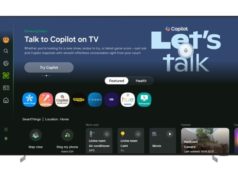One Office to rule them all. Without declaring it in so many words, that’s the apparent goal of Microsoft, which announced today that it will be releasing previews of its universal Office apps — Word, Excel, and Powerpoint — later this month on Windows phones.
The release is designed to give users a sneak preview of Windows 10, and support the software giant’s efforts to make Windows 10 the “everywhere” OS when it is released later this summer.
“With the preview release of the new universal apps for Windows 10 for phones, we’ll have an exciting lineup of Windows 10 apps across form factors,” wrote Jared Spataro (shown above), general manager for the Office marketing team, on the Microsoft Office blog. “The universal apps will deliver tailored tablet and phone experiences for on-the-go productivity, and the desktop apps will offer our broadest, deepest feature set for professional content creation.”
Farewell to the Page?
One of the aspects of the new universal Office apps (particularly Word) is that they are less wed to the traditional form factor of an 8.5 x 11 sheet of paper. The new version of Word offers a “Reading” mode. If you click on the button, the contents of the file flow to fill the available screen space on the device, much like a Web page. The size of the text can be adjusted for easier reading and images can be expanded for viewing, all without affecting the underlying document. This change is designed to accommodate the way readers have been trained to view content on the Web and on mobile devices.
The new apps also offer unprecedented levels of touch control, a reflection not only of the most common interface on mobile devices but on an increasing number of laptops as well.
“On a tablet, the universal apps are fast, fluid, and streamlined for an immersive, hands-on experience, Spataro said. “They’re fantastic for reading and perfect for touch- and pen-based content creation. On a phone, the universal apps adapt to the smaller form factor. Commands and controls are moved to the bottom of the screen so you can triage your work and make edits one-handed with your thumb.”
Still Some Limitations
While it makes sense for Microsoft to adapt its core products for an increasingly mobile world, there are still some practical limitations. Few people would voluntarily choose to write books or long articles on the phone version of Word, and editing Excel spreadsheets and Powerpoints can be frustrating experiences. The popularity of third-party keyboards for tablets, including the iPad, underscores the challenge of doing extensive writing on a mobile device.
One other limitation that might dissuade some content creators is the portability of fonts from one device to another. Typically, mobile devices offer far fewer font options than even the least expensive laptop — and that limits the creative options.
Nonetheless, many consumers may welcome the growing consistency among the various flavors of Microsoft Office. Ultimately, the goal will be software that functions with as few differences as possible as users move content from their phones to tablets to laptops.







